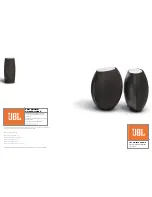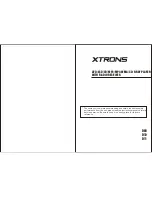
»
Call device Types
The Input Device Types area is where you will specify the types of emergency call input devices that you will be using. Each Call
Device Type can be configured to do different things depending on your requirements. For example, they can play different sounds,
trigger relays, send text or pager notifications, plus many more. Use the Add and Remove buttons to create new input device types or
delete ones no longer needed.
To configure the settings for a specific input device type, first select them in this list. You will see five tabs (“Setup”, “Display”,
“Relays”, “Notification” and “Central Station”) appear.
»
Call Device Types: Setup
• Description
- This is the name you would like to give to this input device type. If you have pullcords in a unit’s living area and
its associated bathroom, you might want them to behave differently. The descriptions could be something along the lines of
“Living Area Pullcords“ and “Bathroom Pullcord”. This description will show on the master station(s) that annuciate calls from
these devices.
• Priority
- You have an option to select from Low, Medium, and High. The priority is used for two things. First, to specify the
sound that is played on a Master when a call is received from this device type. Second, depending on the priority, a higher
priority call will take precedence over a lower priority call if multiple input call types are active at the same time.
• Type of input
- You will have two options to select from. “Wired ECI333” or “Wireless Device” to indicate how this device will
communicate with AlphaECall™ 200 Series.
• Find Location
- When using wireless devices that are not in a fixed location, for example, necklace or wristband pendants,
you can specify that you want AlphaECall™ 200 to try and figure out the location of this device when an emergency call was
placed. For more information on this please see the Wireless Location chapter on page 35.
• Type of contact closure
- You will have two options to select from. “Locking/Maintained/Self-Resetting” or “Momentary” to
indicate the physical action that is done by this emergency input when a call is placed. A Locking/Maintained/Self-Resetting
device would be something like a pullcord, smoke detector, or any type of device that will hold a contact closed when a call is
active. A Momentary device would be something like a push button that only stays closed for the moment that it is pressed
and does not need to be physically reset.
• This is a “Normally Closed” type contact
- For this type of contact closure you can also specify if this contact inactivate state
is normally closed. This could be for a contact on a door that is supposed to always remain closed, but you want to know
when it has been opened in an emergency.
• Automatically Close Call when Reset
- This will allow you to specify whether this call type should be cleared from the screen
as soon as the device is reset, as opposed to having to clear it from a master station.
• Delay before activation
- This is an optional setting that lets you specify a number of seconds before anything is done when
28
Содержание AEC200DM
Страница 16: ...EPS339 Mushroom Button Emergency Push Switch EPS156 Code Blue Push Pull Switch 16...
Страница 17: ...VSS110 Staff Station VPS101 VPS102 Patient Bed Stations 17...
Страница 36: ...Figure RL 1 In this configuration the repeater may have difficulty differentiating between the two locations 36...
Страница 37: ...Figure RL 2 In this configuration the repeater will have an easier time differentiating between locations 37...
Страница 38: ...Figure RL 3 Arrange repeaters in triangle patterns to promote signal strength 38...
Страница 39: ...Figure RL 4 Offset triangles from floor to floor for maximum signal strength efficiency 39...
Страница 42: ...Figure RL 5 The Compass Method of Fingerprinting 42...
















































